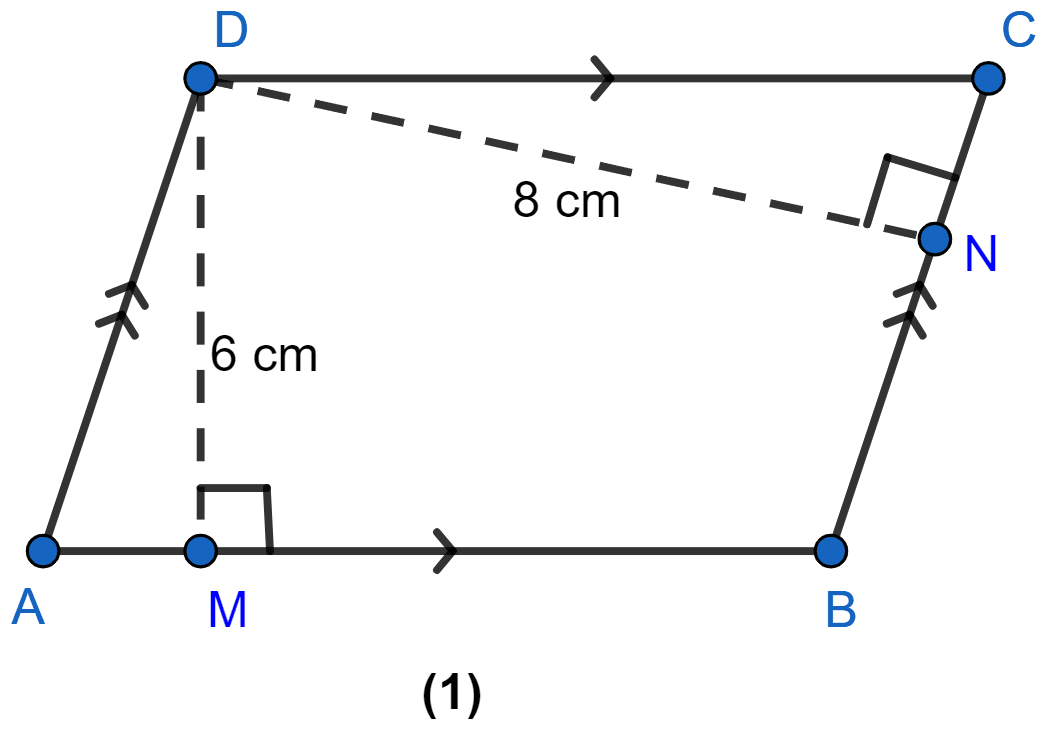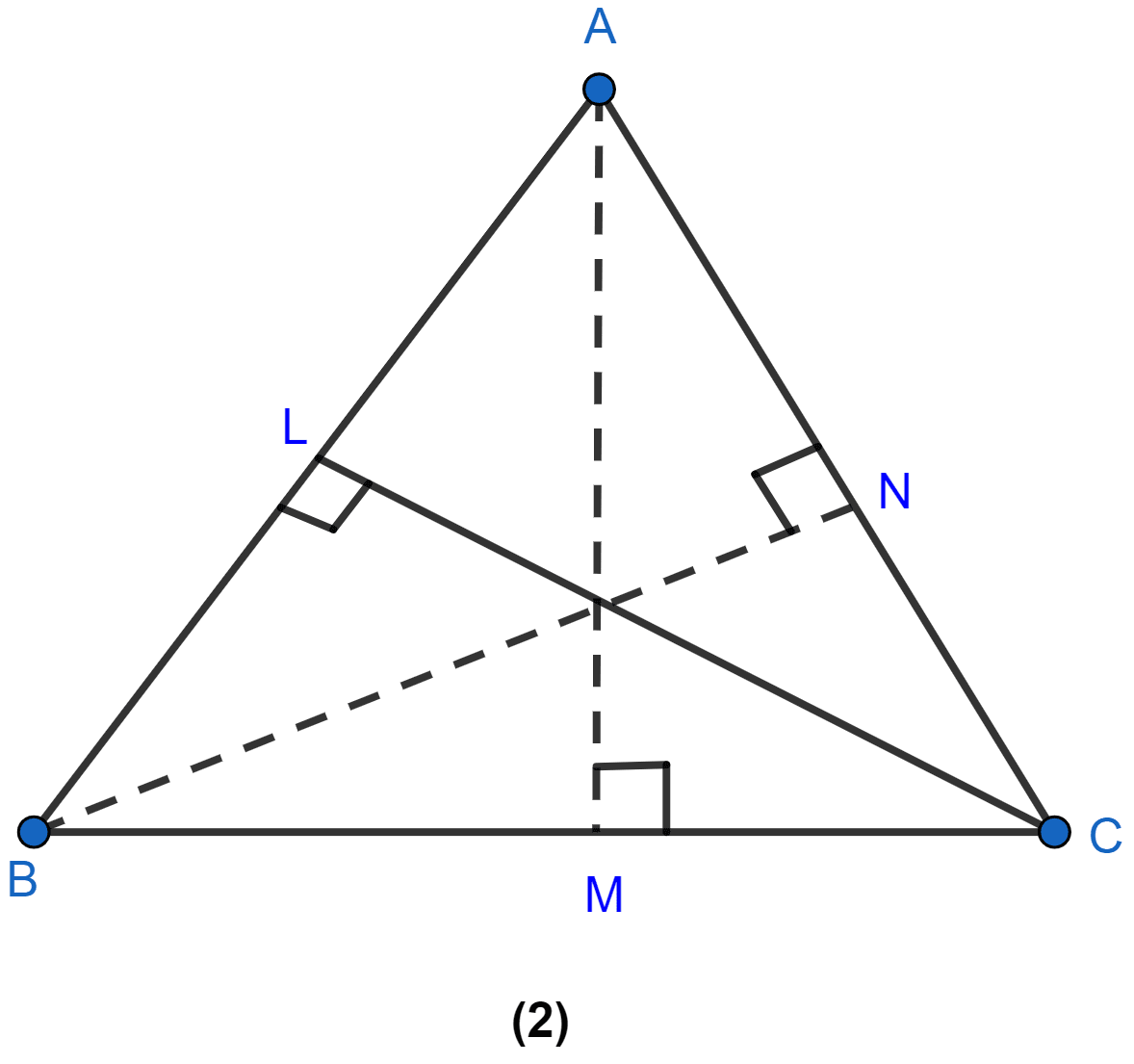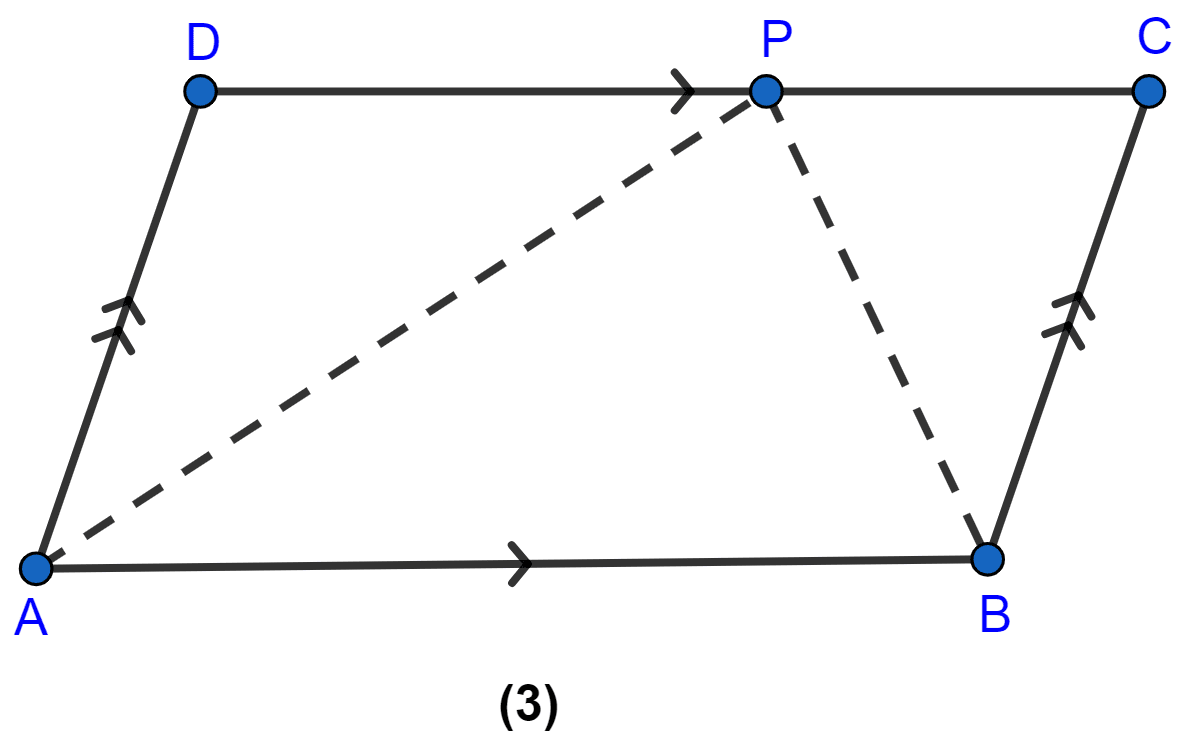Mathematics
In figure (1) given below, the perimeter of the parallelogram is 42 cm. Calculate the lengths of the sides of the parallelogram.

Theorems on Area
26 Likes
Answer
Let AB = p
Since, opposite sides of || gm are equal.
Perimeter of || gm ABCD = 2(AB + BC)
⇒ 42 = 2(p + BC)
⇒ p + BC =
⇒ p + BC = 21
⇒ BC = 21 – P
area of ||gm ABCD = base × height = AB × DM = p × 6 = 6p …….(i)
Also, area of ||gm ABCD = BC × DN
= (21 – p) × 8
= 8(21 – p) ………… (ii)
From (i) and (ii), we get
⇒ 6p = 8(21 – p)
⇒ 6p = 168 – 8p
⇒ 6p + 8p = 168
⇒ 14p = 168
⇒ p = = 12 cm.
⇒ 21 - p = 21 - 12 = 9 cm.
Hence, the sides of ||gm are AB = 12 cm and BC = 9 cm.
Answered By
13 Likes
Related Questions
Any point D is taken on the side BC of a ∆ABC and AD is produced to E such that AD = DE, prove that area of ∆BCE = area of ∆ABC.
ABCD is a rectangle and P is the mid-point of AB. DP is produced to meet CB at Q. Prove that the area of rectangle ABCD = area of ∆DQC.
In the figure (2) given below, the perimeter of ∆ABC is 37 cm. If the lengths of the altitudes AM, BN and CL are 5x, 6x, and 4x respectively, calculate the lengths of the sides of ∆ABC.

In the figure(3) given below, ABCD is a parallelogram. P is a point on DC such that area of ∆DAP = 25 cm2 and the area of ∆BCP = 15 cm2. Find
(i) area of || gm ABCD
(ii) DP : PC.
